by Steve Selden | Dec 23, 2014 | Conservation
Polar bears congregate every year around Churchill, Manitoba to await ice formation in the western and southern Hudson Bay. By early to mid November, polar bears are omnipresent in the Churchill Wildlife Management Area with travelers on polar rovers seeing more than 50 polar bears in a single excursion to the tundra.

Polar bear looking at the polar rover. Photo: Colby Brokvist
There are a few major factors for the bears anticipating the freeze-up in the Churchill region.First and foremost is simple topography relating to the location of the town of Churchill and the jutting land that extends into the bay known as Cape Churchill. As you can see by the map the shelf is quite evident.

While this shelf extension is not all that crucial in itself as a major congregating hot-spot, the contributing factors qualify it as such. Counter-clockwise sea currents cause ice formation to get hung up there. The stalling affect on the flow of water coupled with fresh water flow from the Churchill and Nelson Rivers, to name two of the biggest in the area, create the perfect formula for ice formation here. Since fresh water freezes faster than salt water, the ice will build early off the coast and then combine with the northern ice formed in the colder regions. That pack ice is pushed in by the currents and south winds. All this make for a “perfect storm” of ice formation at the most accessible place in the sub-Arctic.
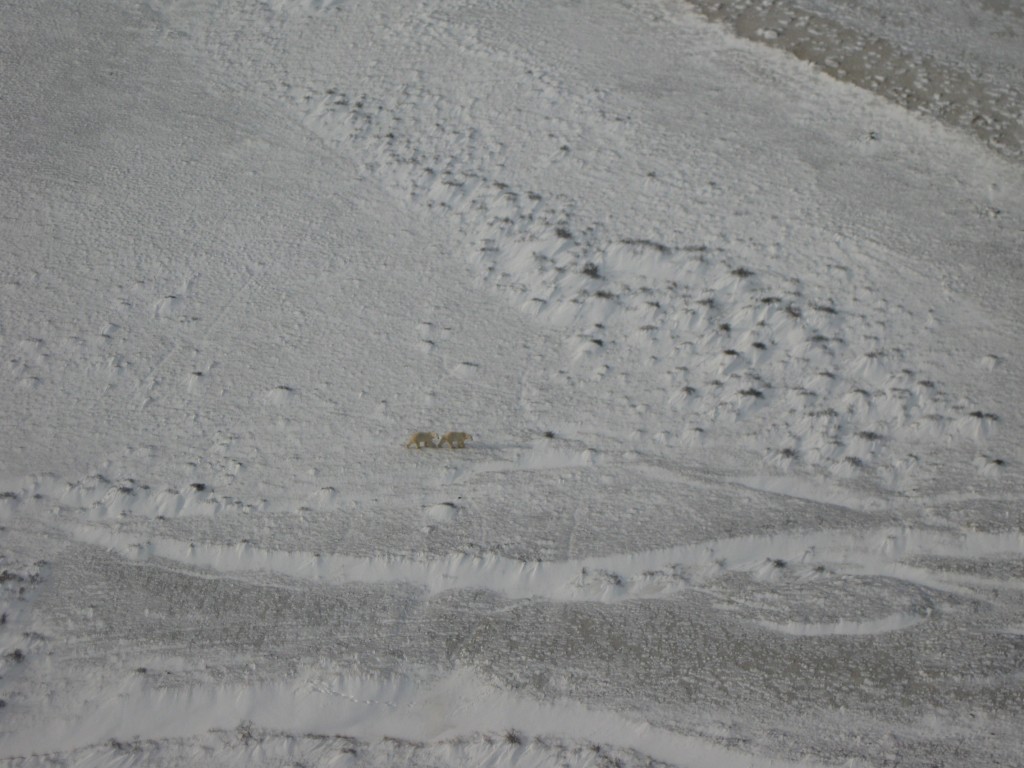
Three polar bears explore the coastline anticipating the freeze-up. Karen Walker photo.
Of course, there is another reason polar bears like Churchill. Human population. A community of humans brings all the side benefits for animals…and in this case hungry polar bears trying to survive to the next seal-hunting season on fat reserves. The aromas and food by-products associated with human life attract every opportunistic species around. Around Churchill, top of the list are the polar bears. Before the old dump was closed down some years ago, polar bears would forage there all day and became a zoo-like attraction to travelers and locals alike. With the majority of that facility closed down, polar bear activity in town escalated over the years. The Polar Bear Alert program has become quite active in attempts to keep up with the burgeoning polar bear appearances in the town.
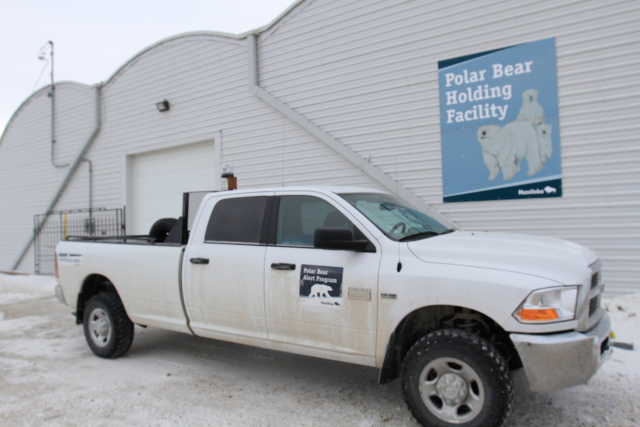
Polar bear holding compound in Churchill.
Global warming indications have also caused polar bears to appear on land earlier in the summer months. With sea ice coverage decreasing recently in the Hudson Bay, polar bears are being forced to come on land and seek alternative food sources. I can say from first-hand experience that polar bear sightings in Churchill have increased over the past 15 years. Guiding summer beluga whale trips for over a decade has allowed me to witness the firsthand increase in bear numbers. Bears have also become more successful at seal hunting in the shallow tidal coastal areas around the Churchill region.
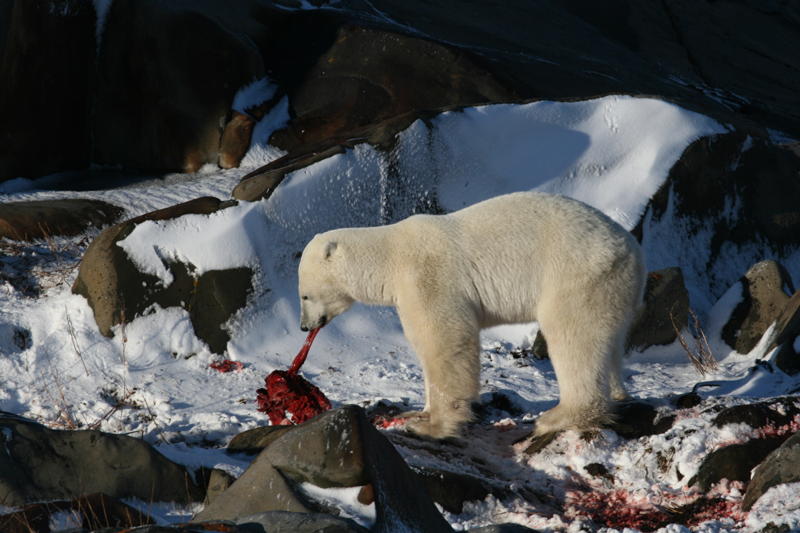
Polar bear enjoying the success of a seal kill. Photo Paul Brown
Overall, the changes in polar bear numbers year-round have spurred Manitoba Conservation officers to adjust their strategy regarding bear management in Churchill. The feeling is this will continue to be readjusted even more over the coming years.
.
by Steve Selden | Dec 22, 2014 | Churchill Photography
The Winter holidays are like no other to look at some favorite polar bear season photos from Churchill. These snowy scenes will give you all that white holiday feeling and hopefully inspire the Christmas or Hanukkah spirit if you’re a bit lacking up to now. Enjoy these amazing shots and come to Churchill to see the polar bears live someday soon.

Polar bear testing the ice in Churchill.

Sparring snowy polar bears in Churchill. Brad Josephs photo.

A polar bear sow with its’ cub of the year. Sean Beckett photo.
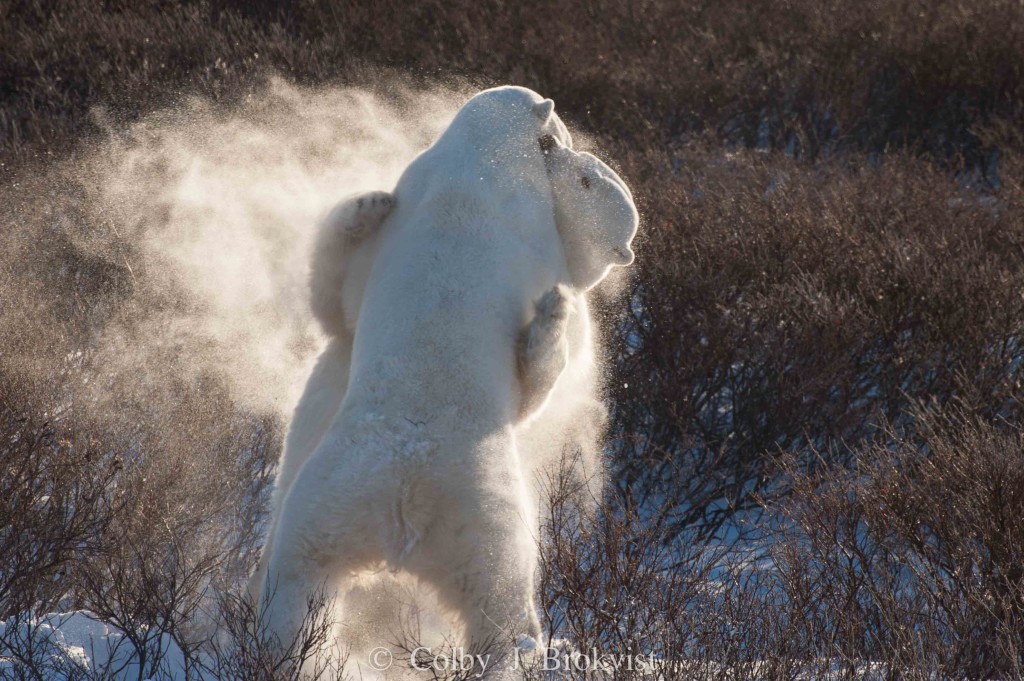
Sparring polar bears in Churchill, Manitoba. Colby Brokvist photo.
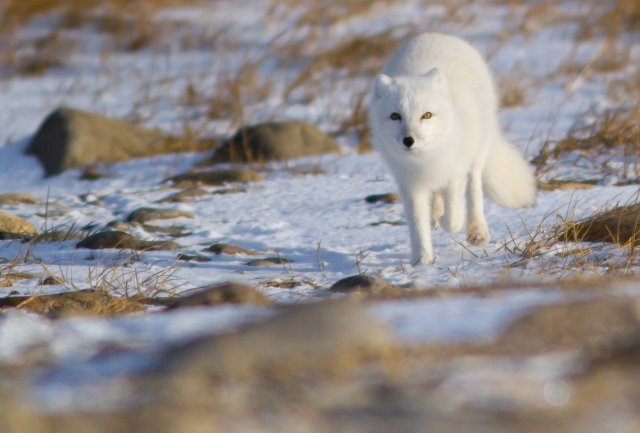
Arctic fox looking for lemmings.
by Steve Selden | Dec 21, 2014 | Tour News
In the early days of polar bear tourism in Churchill, the Northern Nights hotel played a pivitol role in building the foundation for the tourism in the town. Katie and Brett owned the hotel and partnered with Natural Habitat Adventures to form a bond that fostered an incredible jump start to an ever growing eco-tourism business in the region based mainly on polar bear viewing experiences.

Polar bear romping in the snow near Churchill. Eric Rock photo
The hotel was a combination of buildings connected by a narrow, rustic hallway reminiscent of a train car…just longer. The hallway connected the main part of the hotel with lounge and restaurant. The hallway had the old original rooms that were very cabin-like and cozy. The hotel gave one a sense of home, far, far away from home.
In November 2011 the Northern Nights was lost to fire. The blaze raged in frigid-cold weather toward the end of polar bear season that year. Nobody was injured or lost their life thought the building was completely destroyed. After ownership had transferred a few times between locals and out-of towner’s, the end was somewhat poetic in a sense.
Many memories were forged for all the travelers and guides that stayed in the quirky hotel. The characters that worked as staff, such as uncle Joe and Mukluk are gone and the land remains vacant but the welcome feeling remains in the hearts of many. Bears, Belugas and Beers….the hotels motto is also gone, but lives on in Churchill.
by Steve Selden | Dec 19, 2014 | Conservation
There are many ways to see the natural wonders of Churchill. The diversity of the region and the various modes of transportation, both land and sea based, afford some truly adventurous methods to see it all. From polar bears to beluga whales to all the other supporting animals in this Arctic cast of beautiful creatures, one can come to Churchill with Natural Habitat Adventures and see as much as you can!
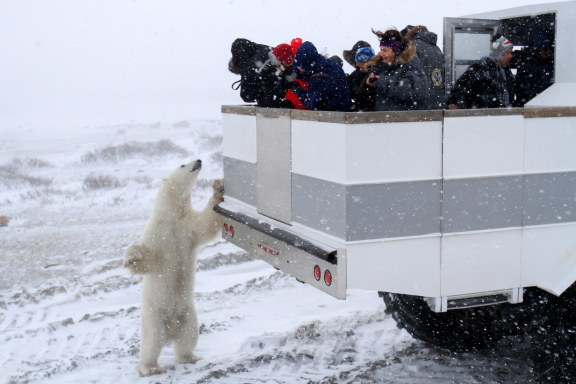
Polar bear taking roll call at a polar rover.
The polar rover is built from the wheels up by our local operator. It’s an amazing vehicle in its own right though when you see polar bears from the back open – air deck you will really see how magical both machine and bear are.
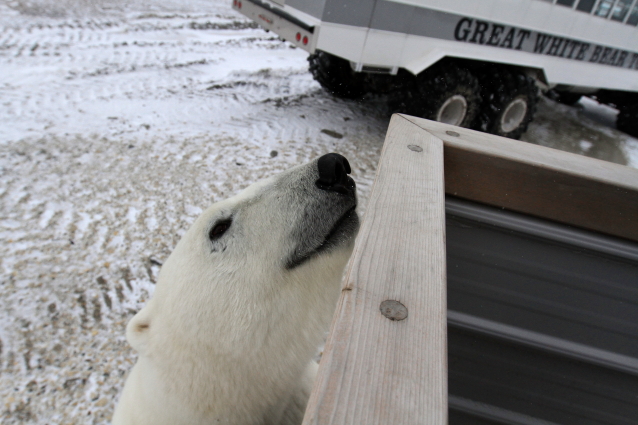
Polar bear looking for a free lunch. Brad Josephs photo.
You can’t get any closer to a polar bear than this in Churchill, Manitoba.

Hudson Bay helicopter lifting off with a cargo of polar bears. Sean Beckett photo.
Hudson Bay Helicopters transports travelers to see the incredible landscape and wildlife below on the tundra and ice. They also play an integral part in wildlife management in the area by transporting bears and biologists to various destinations.
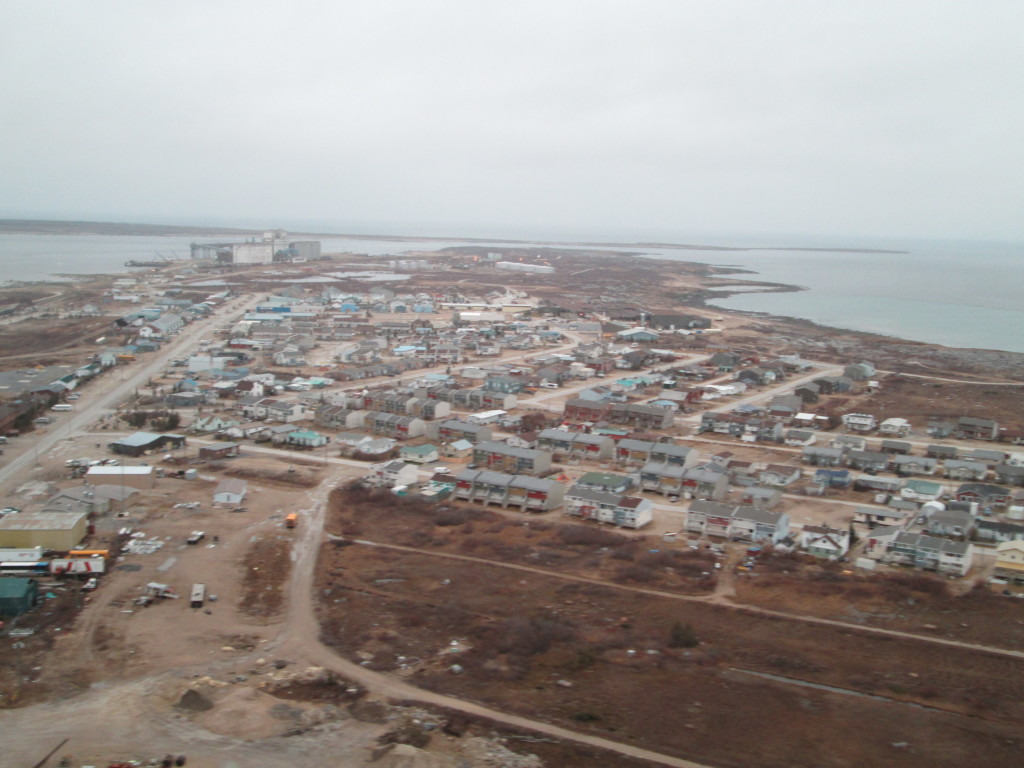
A birds eye view from the helicopter above Churchill. Karen walker photo.
Helicopters offer a perspective of the open space and town of Churchill that is eye opening.
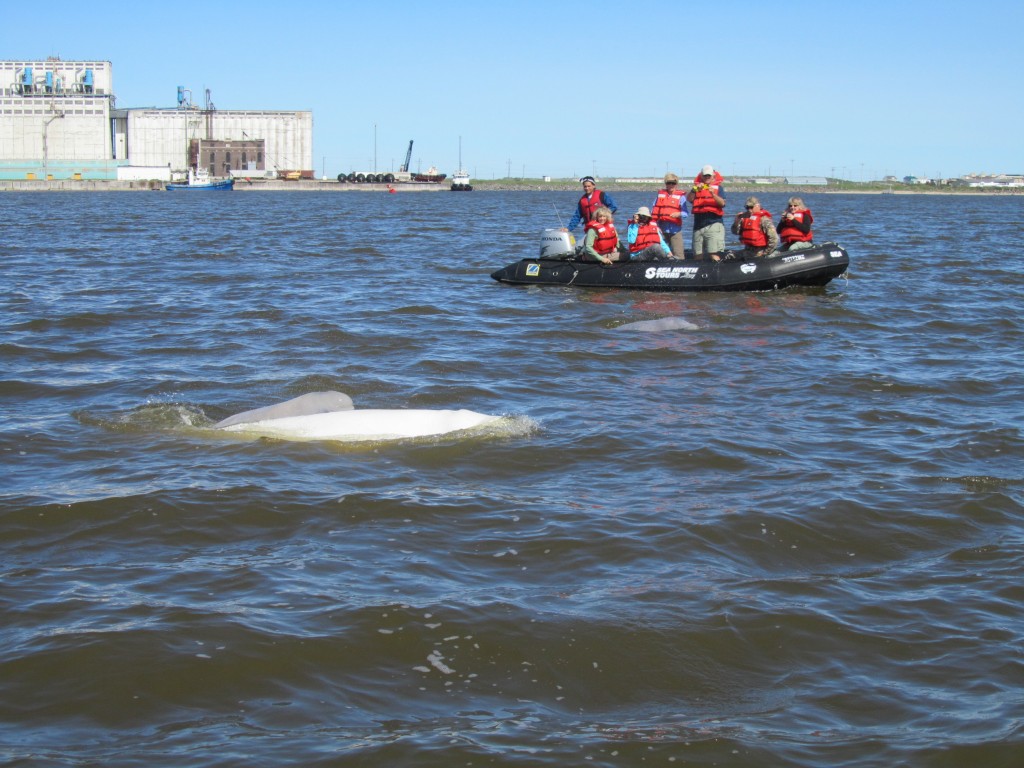
Natural Habitat travelers beluga watching in the Churchill River.
Zodiacs on the Churchill River offer a surface view of beluga whales you cannot get from a bigger vessel where you’re looking down on the whales.
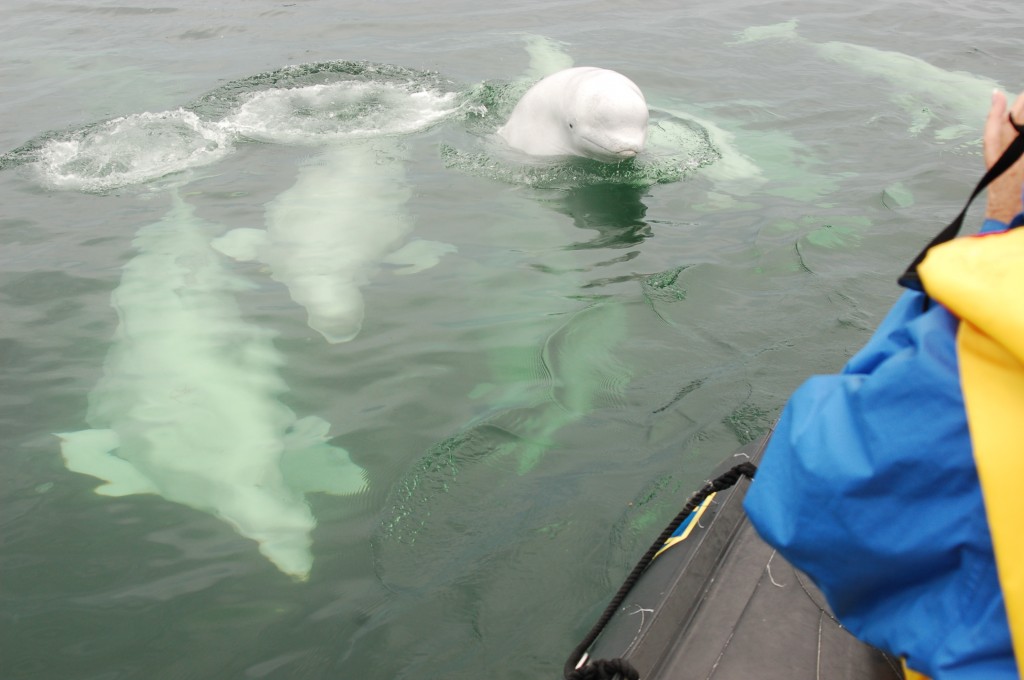
A beluga whale popping out from the Churchill River near the mouth where visibility is amazing. Steve Selden photo.
My favorite photo from my guiding years in Churchill. The thrill of seeing a beluga so close that the spray from his blowhole hits you in the face..
Whatever mode of wildlife adventure you experience you will have memories for a lifetime!
by Steve Selden | Dec 18, 2014 | Churchill News
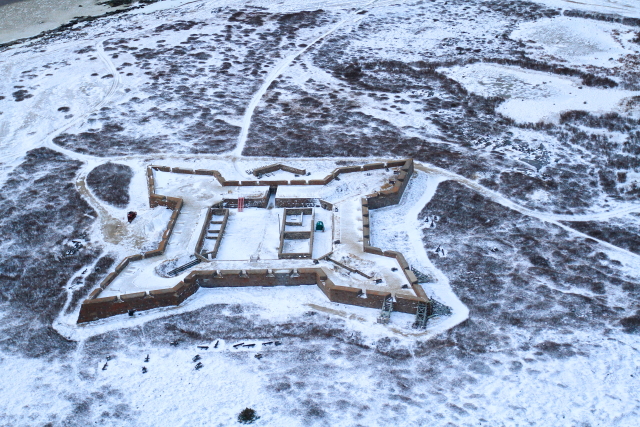
Fort Prince of Wales on the West side of the Churchill River.
If you venture to Churchill in the summertime with Natural Habitat Adventures there’s a good chance you’ll travel cross-river and tour Fort Prince of Wales with a guided interpretation from a Parcs Canada ranger. An intriguing and somewhat comical history endures.
In 1717, just a few years after the Treaty of Utrecht returned all Hudson Bay posts to England, James Knight from the Hudson Bay Company built the ” Churchill River Post” and it was renamed “Prince of Wales” two years later. The initial trading post/fort was constructed to pretty much take advantage geographically of the more northern location and general accessibility to multiple regional fur traders and native trappers.
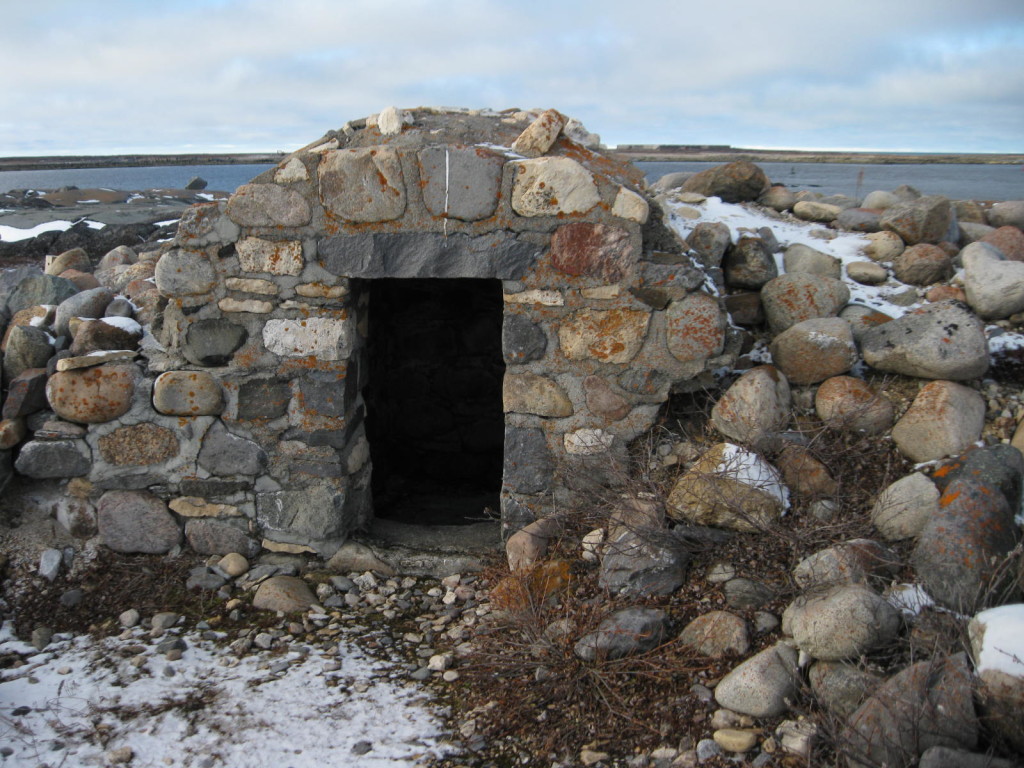
Ammunition cache at Cape Merry for cannon protection of Fort prince of Wales. Karen Walker photo.
With the ongoing feud and battle to control the fur industry between the french and English, the need for a stronghold of greater security seemed like a good idea.
In 1731 construction of the current day Fort Prince of Wales began out on Eskimo Point at the mouth of the Churchill River. A mere 40 years later the four-meter-thick stone walls were completed and the 40 cannon mounts were in place. Nearly unbearable winter living conditions made the construction process less than expeditious. With the sparseness of trees in the area, gathering firewood for heat also was a laborious task. If we could hear the stories from those days.
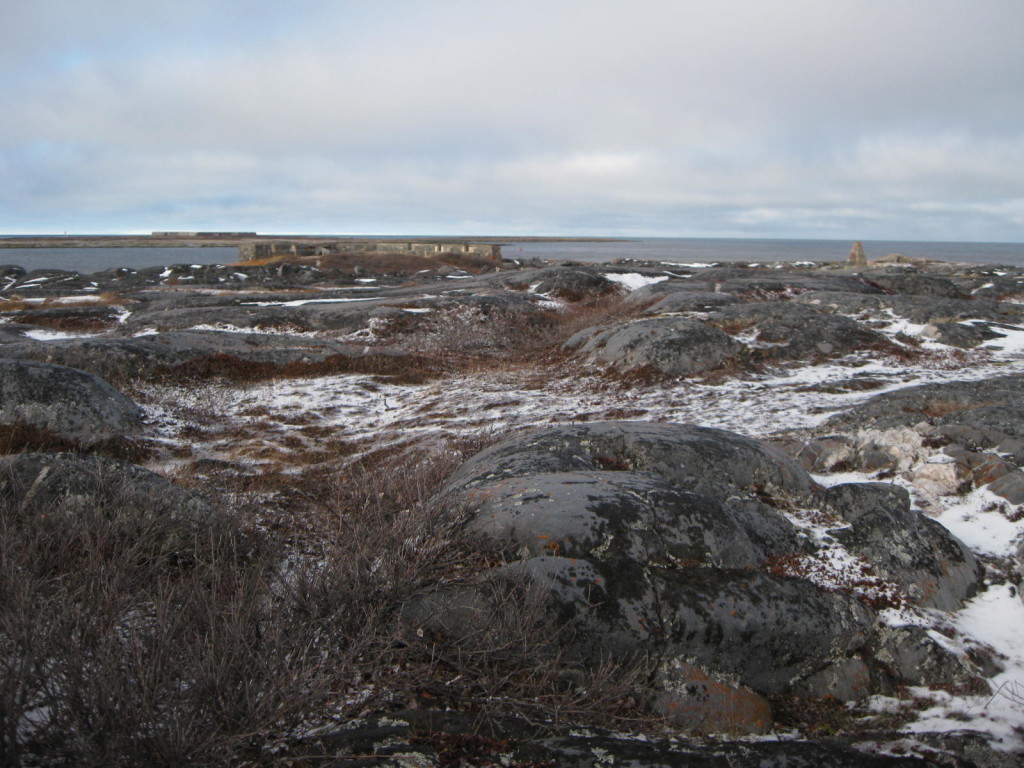
A view across the Cape Merry barrens past the battery and to Fort prince of Wales.
The star fort design, originally conceptualized in the mid-15th century in Italy worked quite well in covering all angles of attack with cannons. Walls were constructed low and thick to withstand cannon fire. A deep ditch surrounding the fort was to compensate for the lower walls.
The grand irony of the entire project culminated in 1782 when three French warships commanded by general La Perouse captured the fort without a single shot being fired. During the whole construction process, the minor details of training the stationed men how to fire a cannon seemed to slip through the cracks. Again, with the severe weather conditions, one can only imagine how basic survival during construction trumped all other endeavors.
In 1934 the process of reconstructing the partially demolished and downtrodden fort began. That process has restored the fort to a most presentable condition. In recent years, an intense archeological effort has produced incredible artifacts used to paint a more vivid picture of life in the 18th century.





















